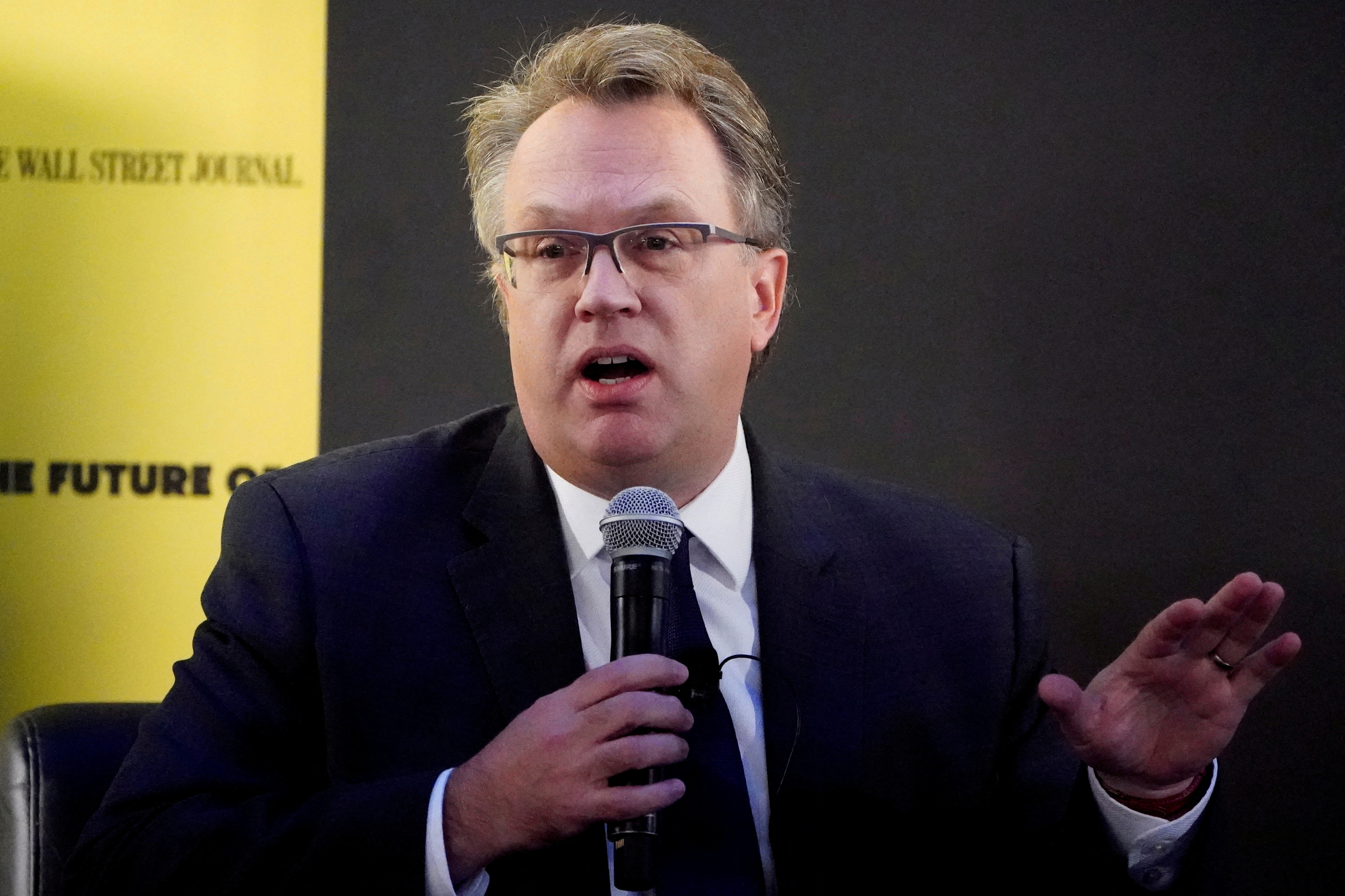Premature for Fed to call end to rate hikes with inflation still high, Williams says

New York Federal Reserve President John Williams speaks at an event in New York, U.S., November 6, 2019. REUTERS/Carlo Allegri/File Photo Purchase Licensing Rights
NEW YORK, May 9 (Reuters) - New York Federal Reserve President John Williams said on Tuesday it is too soon to say whether the U.S. central bank is done raising interest rates, arguing that if more action is needed policymakers won't hold back.
"We haven't said we are done raising rates" and Fed officials have not yet decided what lies ahead with possible increases in short-term borrowing costs, Williams said at an Economic Club of New York gathering. "We've made incredible progress" in taking action to lower overly high levels of inflation, but "if additional policy firming is appropriate, we'll do that," he said.
Williams' remarks on the outlook for interest rates marked his first public comments since the Fed last week raised its benchmark overnight interest rate by a quarter of a percentage point to the 5.00%-5.25% range. The central bank also signaled that after just over a year of aggressive rate hikes, it may be done, or close to it, with the rate rises.
Many participants in financial markets reckon the Fed will refrain from raising rates at its June 13-14 policy meeting, and traders are pricing in the strong possibility the U.S. central bank will cut rates this year.
"In my forecast I see a need to keep a restrictive stance of policy in place for quite some time to make sure we really bring inflation down from 4 percent all the way to 2 (percent). I do not see in my baseline forecast any reason to cut interest rates this year," Williams said.
As the head of the New York Fed, Williams also serves as vice chair of the central bank's rate-setting Federal Open Market Committee, and he is a key voice on the monetary policy and economic outlook.
Williams remains confident the Fed can achieve its objectives, adding "as always, I'll be monitoring the totality of the data and what it implies for the achievement of our goals.
But for now, he said price pressures remain "too high," adding that the Fed remains committed to bringing inflation back to its 2% target. Williams also said "although we have seen some signs of a gradual cooling in the demand for labor - as well as for some goods and commodities - overall demand continues to exceed supply."
TIGHTER CREDIT, SLOWER ECONOMY
The Fed is eyeing an end to the rate-hike cycle as inflation pressures have eased a bit and banking sector stress has increased uncertainty about the outlook. Tighter financial conditions tied to banking sector troubles are expected to help further cool the economy, although it's unclear by how much.
But the prospect of further rate rises remains alive, and last week's robust employment report for April showed that the job market remains very strong even in the face of Fed action, which could in turn compel the central bank to press forward with rate hikes at some point this year.
Fed officials generally agree that the worst of the bank stresses that kicked off in the wake of several high-profile failures starting in March are now over.
Still, Williams said the aftermath of the banking stresses will figure prominently in his thinking about the future of monetary policy. "I will be particularly focused on assessing the evolution of credit conditions and their effects on the outlook for growth, employment and inflation," he said.
Williams told reporters after his speech that the Fed sees value in U.S. bank diversity. "We don't have a goal to have more consolidation," he said, adding "we want healthy and sound banks of all the different sizes to come out of this" set of difficulties, which were driven by a few troubled financial firms not representative of the financial sector as a whole.
In his speech, Williams said he expects inflation, which was running at an annual rate of 4.2% in March as measured by the personal consumption expenditures price index, to fall to 3.25% this year and back to the 2% target by 2025. He noted there have been signs of slowing price pressures but core services inflation stripped of housing factors remains persistent.
He also said he sees the economy growing moderately this year and that the jobless rate, at 3.4% as of April, should rise to between 4.0% and 4.5% this year.
Sign up here.
Reporting by Michael S. Derby; Editing by Paul Simao
Our Standards: The Thomson Reuters Trust Principles.
